Where We’ve Been
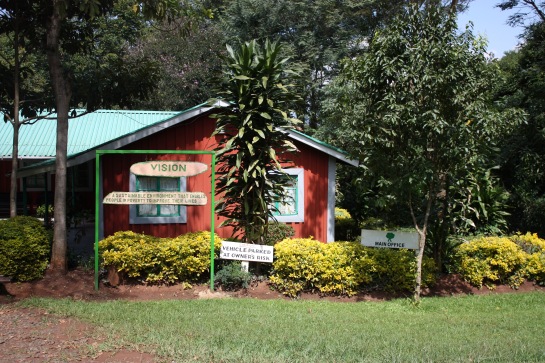
For the last two and a half months Claire and I have been living and working in Kitale, a town in Trans Nzoia county, Western Kenya, home to the Kenya headquarters of Vi Agroforestry.
Vi is an organization founded and supported by a Swedish magazine of the same name. It was founded in the 80’s when a Swedish journalist named Sten Lundgren traveled to Kenya and, struck by the specter of encroaching desertification, wrote an impassioned editorial imploring his countrymen to cease “drowning” each other in flowers and instead “give them a forest!” To no one’s surprise more than Sten’s, donations for trees started flooding in and Vi Agroforestry (called in Swedish Vi Skogen) began.
First in the arid region of West Pokot–where a forest still grows on land at the boundary between the mutually hostile Turkana and Pokot tribes–Vi’s first employees, a Swedish volunteer and a young Kenyan named William Makokha (who still oversees seed production), began planting trees.
William Makokha in the forest he helped to plant in West Pokot, Kenya.
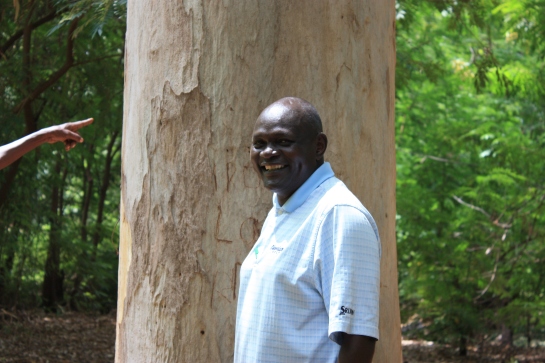
It didn’t take long for Vi’s operation to shift from outright reforestation–with its attendant challenge of land availability–to agroforestry i.e. trees on farms. It was also clear that opportunity lay more in well-watered Trans Nzoia than in West Pokot. Trans Nzoia had been one of the areas designated as “white highlands” during the colonial period, meaning the land was designated for settlement by white British colonists. When independence came, much of the land was redistributed to Kenyans, drawing in farmers eager for land from all over the country. These new settlers found themselves in a landscape denuded by the large-scale agriculture practiced by the colonists.
When Vi was beginning, Trans Nzoia was still relatively deforested, so as the young organization expanded its operations it built tree nurseries around the county and began distributing trees to farmers eager to grow timber and firewood on plots reclaimed from the colonialists’ mono-crop plantations.
As Vi moved toward empowering farmers instead of planting trees on its own, they came in contact with the World Agroforestry Centre (also known as the International Centre for Research in Agroforestry, or ICRAF–an acronym which sticks even to the new name). The impact evaluation I’m working on is an ICRAF project, and Claire’s work is to trace Vi’s technical knowledge back to its source in scientific research–including ICRAF’s work. So the narrative above comes from oral histories she has collected over the past few months.
Since its early days, Vi has done some remarkable things: they contributed significantly to reforestation in Trans Nzoia, participated in the field-testing of a number of innovative agroforestry practices, developed Kenya’s first carbon credit trading program, and expanded their operations into Tanzania, Uganda and Rwanda.
In addition to providing agricultural advisory services to farmer groups throughout their focal areas, Vi’s headquarters serves as a demonstration area for agroforestry techniques, a tree nursery, and an arboretum dedicated to species indigenous to East Africa.
Tree seedling in the Vi nursery, shaded by trees dedicated to past directors and funders of the organization.

As if that weren’t enough they also maintain a garden called the Grove of Peace dedicated to the memory of the victims of the Estonia disaster–a 1994 shipwreck which claimed the lives of 900 people in the Baltic Sea. This garden is the most striking parts of the Vi campus. It is open to the public, and people stroll in throughout the day to walk, eat lunch, pray, and even sing hymns.
Benches in the Grove of Peace, often occupied by Kitale residents on their lunch break.
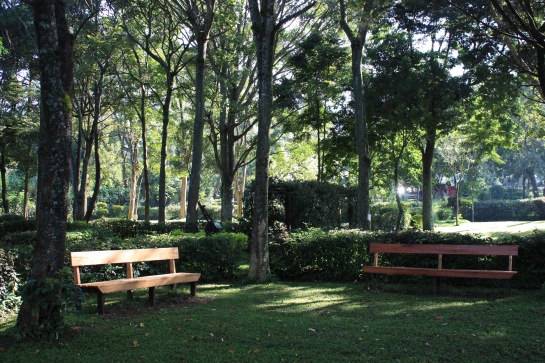
A cow wanders through a trellis in the Grove of Peace. Her milk goes into the morning chai for Vi staff.
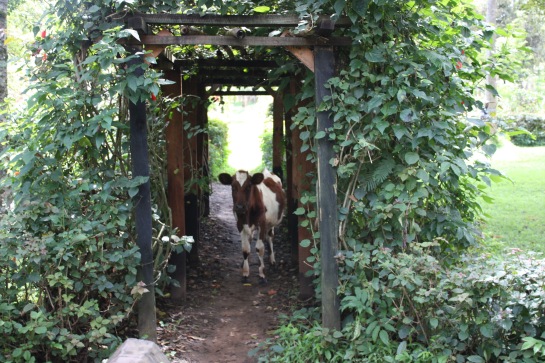
Claire and I spent the better part of the summer on the back porch of the Vi office, looking down over the peace garden and the arboretum, guarding our lunch from the De Brazza’s monkeys and trying to catch a glimpse of the more reclusive Colobus. It was a wonderful time.
A De Brazza’s monkey scaling the office gutter. These guys bang on the porch roof in frustration if we get between them and the scraps in the trash can.
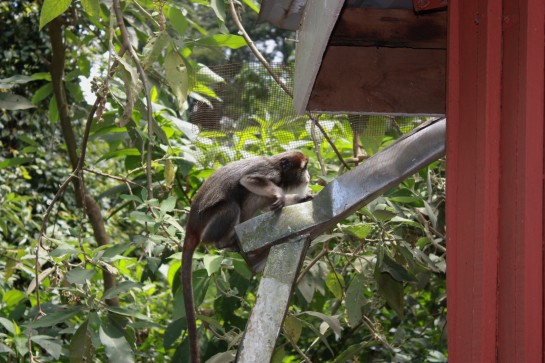
The Colobus monkeys are harder to spot. They can leap incredible distances, white fringe flying behind them. Just once they came close enough for Claire to get photos.
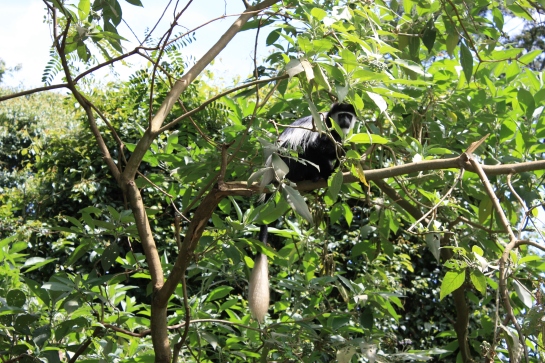
So that’s where we’ve been for the last little while! Claire and I have now moved to Nairobi to be close to the ICRAF office as we write our reports. But we’ll make it back to Vi in Kitale several times before we leave Kenya. We are so grateful to our colleagues there for being so welcoming, and we are glad to get to continue working together as we finish our respective projects.